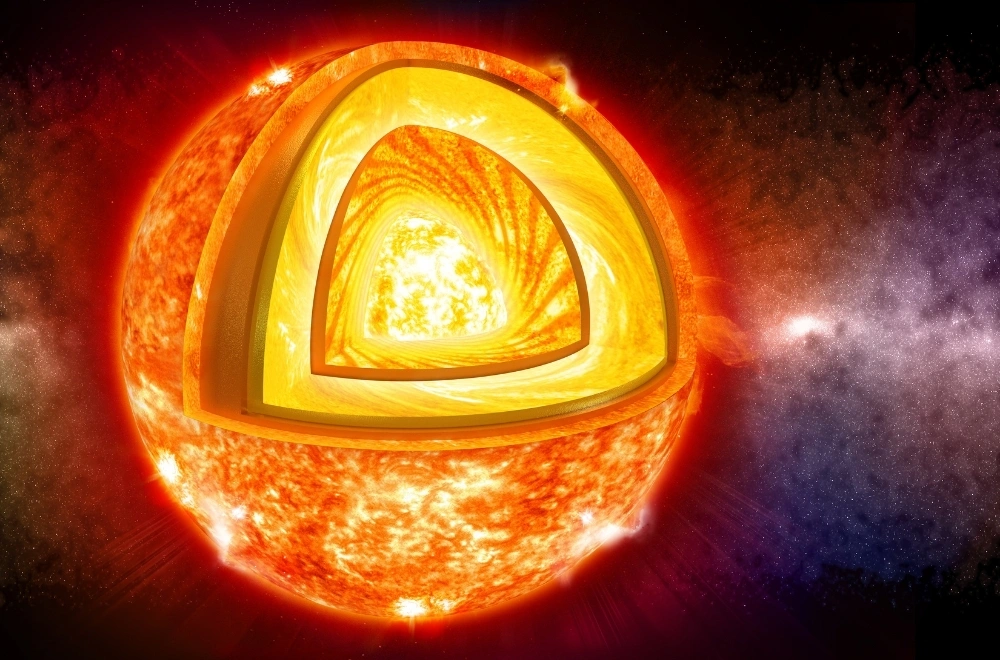The Earth is a complex and dynamic planet composed of several distinct layers, each with unique physical and chemical properties. These layers vary in composition, temperature, and behavior, playing crucial roles in geological processes such as plate tectonics, volcanic activity, and the generation of Earth’s magnetic field.
Scientists have categorized Earth’s structure into four primary layers:
- The Crust
- The Mantle
- The Outer Core
- The Inner Core
This article provides a detailed breakdown of each layer, exploring their characteristics, composition, and significance in Earth’s geology.
1. The Crust: Earth’s Outermost Layer
The crust is the thinnest and outermost layer of the Earth, forming the solid surface we live on. It varies in thickness, composition, and density depending on whether it is continental crust (under land) or oceanic crust (under oceans).
Types of Crust
- Continental Crust:
- Thickness: 30–50 km (up to 70 km under mountain ranges)
- Composition: Mostly granite and sedimentary rocks, rich in silica (Si) and aluminum (Al)
- Density: ~2.7 g/cm³
- Age: Up to 4 billion years old (some of the oldest rocks on Earth)
- Oceanic Crust:
- Thickness: 5–10 km
- Composition: Primarily basalt, rich in iron (Fe) and magnesium (Mg)
- Density: ~3.0 g/cm³ (denser than continental crust)
- Age: Younger (less than 200 million years old due to constant recycling at subduction zones)
Key Features of the Crust
- The crust and the uppermost part of the mantle form the lithosphere, a rigid layer that is broken into tectonic plates.
- The boundary between the crust and the mantle is called the Mohorovičić discontinuity (Moho), discovered by seismologist Andrija Mohorovičić in 1909.
- The crust is where most geological activity occurs, including earthquakes, volcanoes, and mountain formation.
2. The Mantle: Earth’s Thickest Layer
The mantle lies beneath the crust and extends to a depth of about 2,900 km, making it the largest layer by volume. It is composed mainly of silicate rocks rich in iron and magnesium.
Structure of the Mantle
The mantle is divided into two main regions:
- Upper Mantle (Lithosphere & Asthenosphere)
- Lithosphere: The rigid outer part (includes the crust and uppermost mantle).
- Asthenosphere: A semi-fluid, ductile layer (100–700 km deep) where convection currents drive plate tectonics.
- Lower Mantle (Mesosphere)
- Extends from 660 km to 2,900 km depth.
- More rigid due to extreme pressure, though still capable of slow flow over geological time.
Composition & Properties
- Primary Minerals: Olivine, pyroxene, and perovskite.
- Temperature: Ranges from 500°C (near the crust) to 4,000°C (near the core).
- State: Solid but behaves like a viscous fluid over long timescales (plasticity).
Role in Plate Tectonics
- Convection currents in the mantle cause the movement of tectonic plates.
- Hot material rises, cools near the surface, and sinks back down, creating a continuous cycle.
- Mantle plumes (hot upwellings) can lead to volcanic hotspots like Hawaii.
3. The Outer Core: Earth’s Liquid Metal Layer
The outer core is a molten layer composed primarily of iron and nickel, with traces of sulfur and oxygen. It lies between 2,900 km and 5,150 km beneath the Earth’s surface.
Key Characteristics
- State: Liquid (due to high temperatures exceeding 4,000°C).
- Composition: ~80% iron, ~20% nickel, and lighter elements (sulfur, oxygen).
- Density: ~10–12 g/cm³ (much denser than the mantle).
- Magnetic Field Generation: The movement of conductive molten metals generates Earth’s geomagnetic field through the dynamo effect.
Importance of the Outer Core
- The geodynamo process creates Earth’s magnetic field, which protects the planet from harmful solar radiation.
- Seismic waves (S-waves) cannot travel through the outer core, helping scientists confirm its liquid state.
4. The Inner Core: Earth’s Solid Metallic Heart
The inner core is the innermost layer, extending from 5,150 km to 6,371 km at Earth’s center. Despite extreme temperatures (~5,000–6,000°C), it remains solid due to immense pressure.
Key Features
- State: Solid (pressure overrides temperature effects).
- Composition: Mostly iron and nickel, with possible traces of lighter elements.
- Density: ~13 g/cm³ (the densest layer).
- Rotation: The inner core rotates slightly faster than the rest of the Earth, a phenomenon called super-rotation.
How Do We Know It’s Solid?
- Seismic studies show that P-waves (primary waves) travel faster through the inner core than through the outer core, indicating a solid structure.
- Laboratory experiments simulating core conditions confirm iron remains solid at such pressures.
Interactions Between Earth’s Layers
The four layers do not exist in isolation—they interact dynamically, influencing geological and geophysical processes:
- Mantle Convection & Plate Tectonics
- Heat from the core drives convection in the mantle, moving tectonic plates.
- Subduction zones (where plates collide) recycle crust back into the mantle.
- Core-Mantle Boundary (CMB) Dynamics
- The D″ layer (a region at the base of the mantle) interacts with the core, influencing heat transfer and mantle plumes.
- Geodynamo & Magnetic Field
- The liquid outer core’s motion generates Earth’s magnetic field, crucial for shielding against solar winds.
- Seismic Activity & Earthquakes
- Stress between tectonic plates (lithosphere) causes earthquakes and volcanic eruptions.
Conclusion
Earth’s four main layers—the crust, mantle, outer core, and inner core—work together to create the dynamic planet we inhabit. From the rigid tectonic plates of the lithosphere to the swirling metals of the outer core, each layer plays a vital role in shaping Earth’s geology, climate, and magnetic field.
Understanding these layers helps scientists predict earthquakes, explore mineral resources, and even study other planets. As research continues, new discoveries about Earth’s interior will deepen our knowledge of the planet’s past, present, and future.
